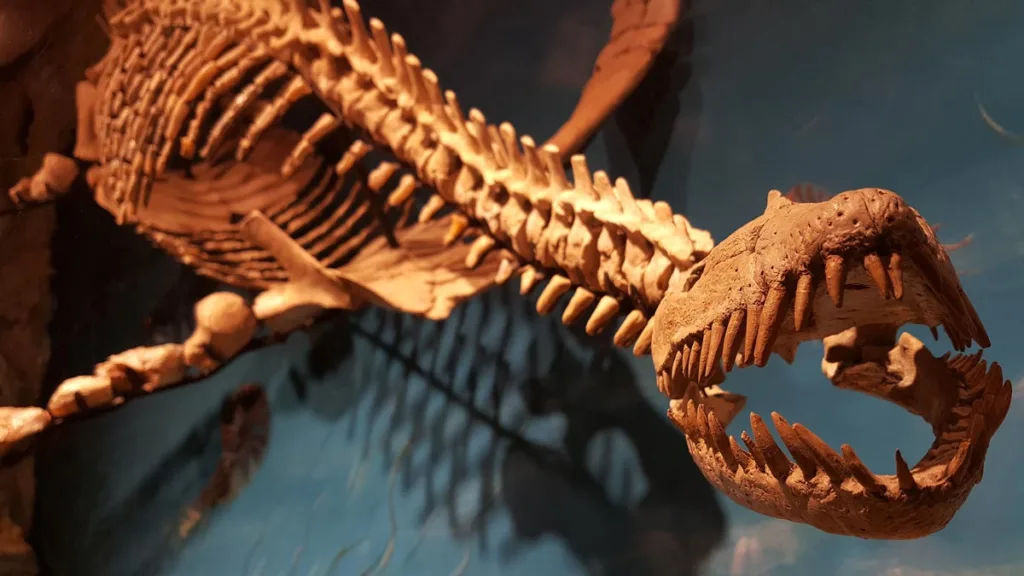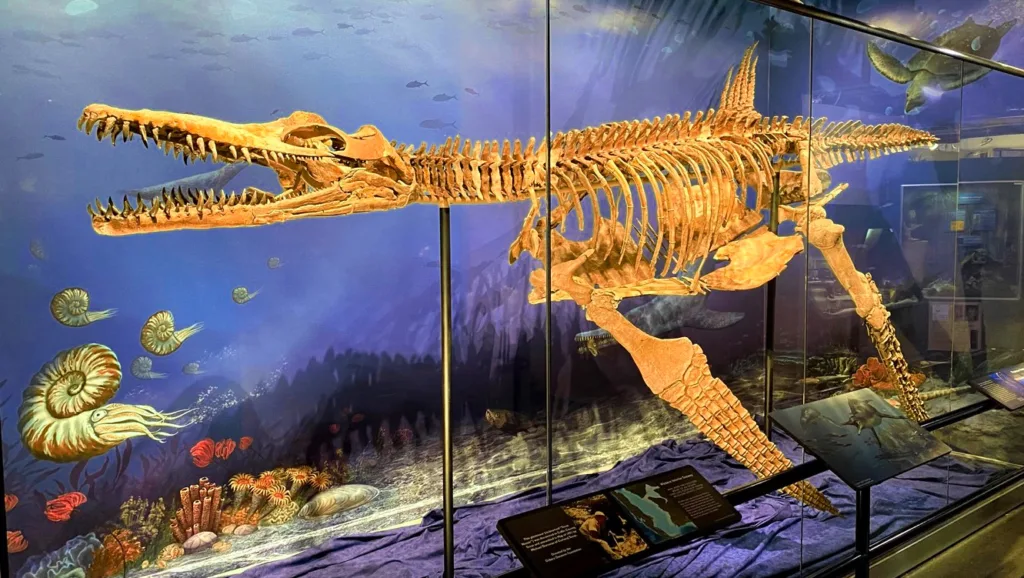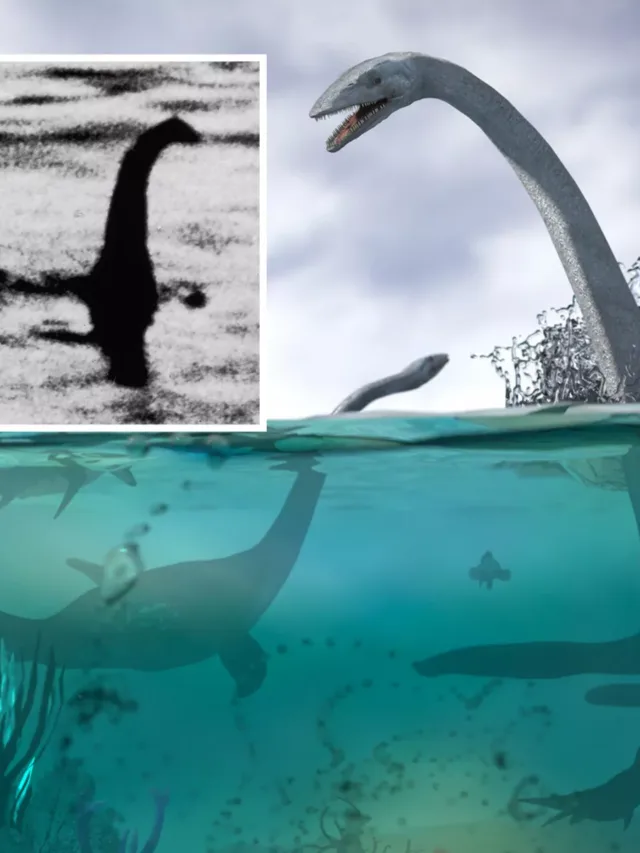Table of Contents
Introduction
The legend of the Loch Ness Monster, affectionately known as Nessie, has captivated the imaginations of people for centuries. Reports of a mysterious creature lurking in the depths of Scotland’s Loch Ness have sparked numerous debates and investigations. While skeptics dismiss it as a myth or hoax, recent discoveries have reignited the question: Is the Loch Ness Monster real? In this blog, we’ll delve into the recent fossil discovery and its implications, explore the history of Nessie sightings, and examine the scientific plausibility of a creature like Nessie surviving in Loch Ness.


Key facts about the Loch Ness monster:
- The existence of the Loch Ness Monster is considered “plausible” by some scientists due to the discovery of plesiosaur fossils in Morocco’s Sahara Desert.
- Plesiosaurs, ancient marine reptiles from the Jurassic period, were once thought to be exclusively saltwater creatures but may have adapted to freshwater environments.
- Loch Ness, located in the Scottish Highlands, has a history of reported sightings and legends associated with the monster.
- The recent discovery of plesiosaur fossils in an ancient river system in Africa has fueled speculation that Nessie could have lived in freshwater.
- Plesiosaurs were apex predators, swift hunters of large prey in ancient oceans, but were not previously considered freshwater species.
- The Loch Ness loch was formed during glacial processes more than 10,000 years ago at the end of the last Ice Age.
- English fossil collector Mary Anning made a groundbreaking discovery of plesiosaur skeletons in 1826, the first ever found.
- Plesiosaur fossils discovered in Morocco are baffling to experts, consisting of bones and teeth from adult and juvenile individuals.
- Paleontologists believe some plesiosaurs could tolerate both fresh and salt water, potentially living and feeding in freshwater environments.
- While the theory of plesiosaurs surviving in Loch Ness is intriguing, they went extinct along with the dinosaurs about 66 million years ago.
- The legend of the Loch Ness Monster gained popularity in the 1930s, with sightings and the iconic “Surgeon’s Photograph” contributing to Nessie’s fame.
- Numerous expeditions and scientific investigations have been conducted to search for evidence of Nessie’s existence in Loch Ness.
- The eel theory, based on environmental DNA studies, proposes that Nessie could be a giant eel, but conclusive evidence remains elusive.
- In 2016, the remains of a model of the Loch Ness Monster used in a film were discovered on the loch bed by an underwater robot.
- The Loch Ness Centre & Exhibition in Drumnadrochit offers visitors glimpses and photographs of the fabled creature, despite Nessie’s elusiveness.
The Remarkable Fossil Discovery
In a groundbreaking discovery, a team of researchers uncovered the fossilized remains of small, long-necked marine reptiles known as plesiosaurs in Morocco’s Sahara Desert. Plesiosaurs were apex predators during the Jurassic period, and until now, they were believed to be exclusively saltwater creatures. The fact that these fossils were found in a 100-million-year-old river system indicates that some plesiosaurs may have lived in freshwater environments. This discovery has led British scientists to consider the existence of a Loch Ness-like creature more “plausible” than previously thought. (Source: Newsweek)
Plesiosaurs: Ancient Aquatic Giants
Plesiosaurs were a diverse group of extinct marine reptiles that emerged around 230 million years ago and were particularly abundant during the Jurassic period. These creatures had long necks, paddle-like limbs, and formidable teeth, making them fast hunters of large prey in the ancient oceans. While they were formidable predators, plesiosaurs were traditionally considered an exclusive saltwater species. The recent fossil discovery in North Africa challenges this belief, suggesting that some species may have been capable of living in freshwater environments as well. (Source: Cretaceous Research)


The Legend of Nessie
Loch Ness, located in the Scottish Highlands, is a massive freshwater loch approximately 37 km long and 230 m deep. Reports of a mysterious creature inhabiting the loch date back to ancient times, with folklore associated with the Pict peoples. However, it was not until the early 20th century that Nessie’s legend gained significant attention.
In the 1870s and 1880s, there were various sightings of strange objects “wriggling and churning up the water” and descriptions of “a large stubby-legged animal” surfacing from the loch. These reports were initially dismissed, but in 1933, the Loch Ness Monster’s legend began to grow exponentially. On May 2, 1933, the Inverness Courier published a story about a couple allegedly sighting “an enormous animal rolling and plunging on the surface” of the loch, capturing the public’s imagination. The most iconic image of the so-called Loch Ness Monster was supposedly taken by Robert Kenneth Wilson and published in the Daily Mail on April 21, 1934. (Source: BBC, The Independent)
The Scientific Plausibility of Nessie
The recent fossil discovery of freshwater-dwelling plesiosaurs in North Africa has rekindled the debate about the scientific plausibility of a creature like Nessie existing in Loch Ness. While the traditional notion of plesiosaurs as strictly saltwater species was challenged, it is essential to consider other factors.
The extinction event that wiped out the dinosaurs, including plesiosaurs, occurred approximately 66 million years ago. This fact raises doubts about the survival of plesiosaurs in modern times. However, proponents of the Nessie theory argue that Loch Ness’s remote and secluded location could have preserved a relic population of these ancient creatures. Furthermore, the loch’s deep and murky waters have made it challenging to conduct comprehensive surveys, leaving room for speculation. (Source: The Guardian)
Modern Nessie Sightings and Investigations
Over the years, numerous expeditions, investigations, and attempts to capture Nessie on camera have been made. Despite modern technologies, such as sonar devices and underwater robots, conclusive evidence of the creature’s existence remains elusive. While some sightings have been debunked as hoaxes or misinterpretations, others continue to intrigue believers and skeptics alike.
In 2019, the idea that Nessie could be a giant eel gained attention when investigations into the loch’s environmental DNA suggested a significant amount of eel DNA. However, no definitive proof of a monster was found. (Source: The Guardian)
Nessie in Popular Culture
The legend of Nessie has left an indelible mark on popular culture. Movies like ‘Loch Ness’ (1996), centered around a scientist attempting to prove the existence of the monster, have contributed to the creature’s enduring fame. Additionally, the Loch Ness Centre & Exhibition in Drumnadrochit attracts visitors seeking to learn more about the mythical creature, providing glimpses and posing for photographs with a model of Nessie. (Source: IMDb, Loch Ness Centre & Exhibition)
Conclusion
The Loch Ness Monster remains an enigma, inspiring wonder and curiosity among people worldwide. While the recent fossil discovery has made the existence of a creature like Nessie more plausible, conclusive evidence has yet to surface. The legend of Nessie continues to capture the imagination and serves as a reminder that the mysteries of the natural world often fuel our sense of wonder and fascination.
Sources:
- Newsweek – “Loch Ness Monster Real? Plesiosaurs Fossils Unearthed in the Sahara Desert Provide Clue”
- Cretaceous Research – “Fossil evidence for the freshwater habits of the plesiosaur Cryptoclidus etches from the Upper Jurassic Kimmeridge Clay Formation of the UK”
- BBC – “Loch Ness Monster: Top five theories”
- The Independent – “Loch Ness monster ‘plausible’ say scientists who dismiss other explanations.”
- The Guardian – “Could the Loch Ness monster be a plesiosaur? Science says maybe”
- IMDb – “Loch Ness (1996)”
- Loch Ness Centre & Exhibition – “Home of Nessie – The Loch Ness Centre & Exhibition”




































1 thought on “New Nessie Fossil Discovery Fuels Speculation, Is the Loch Ness Monster Real in 2023?”